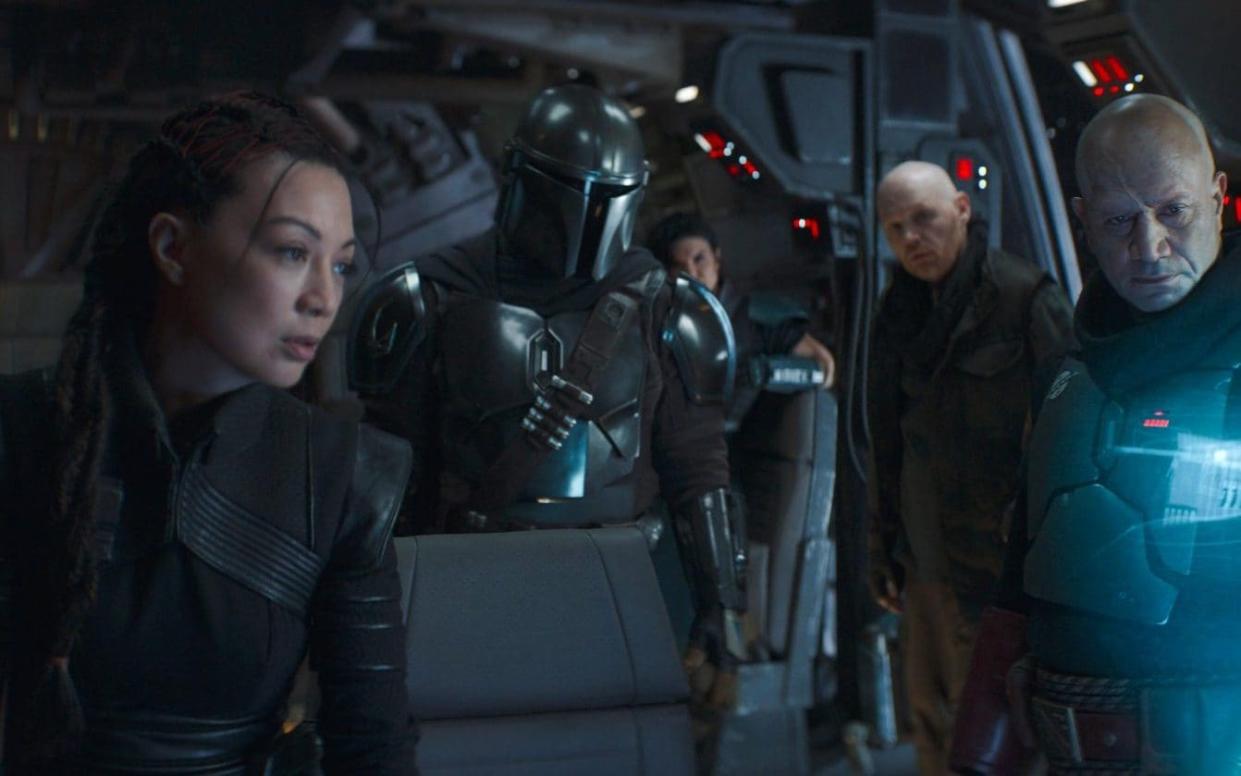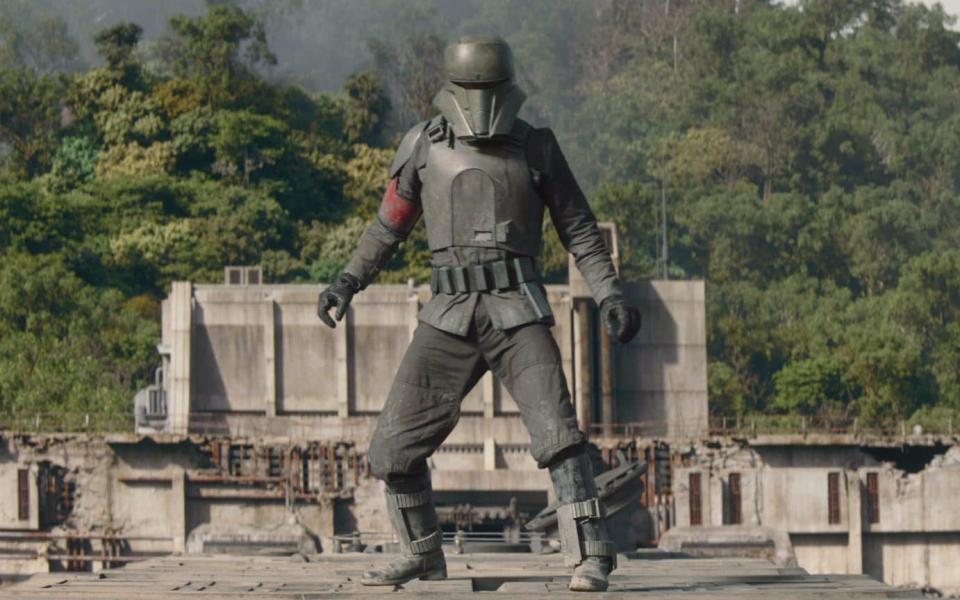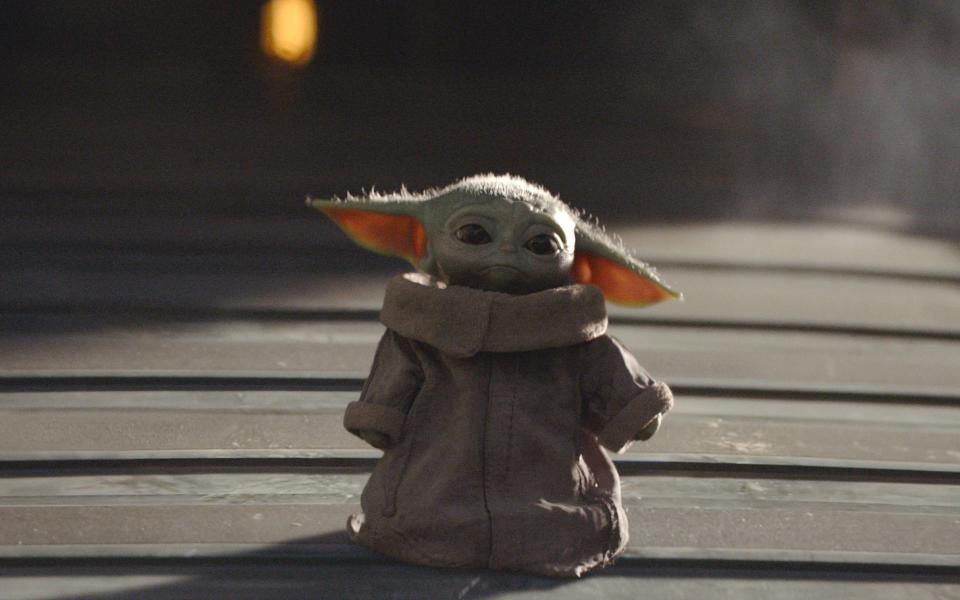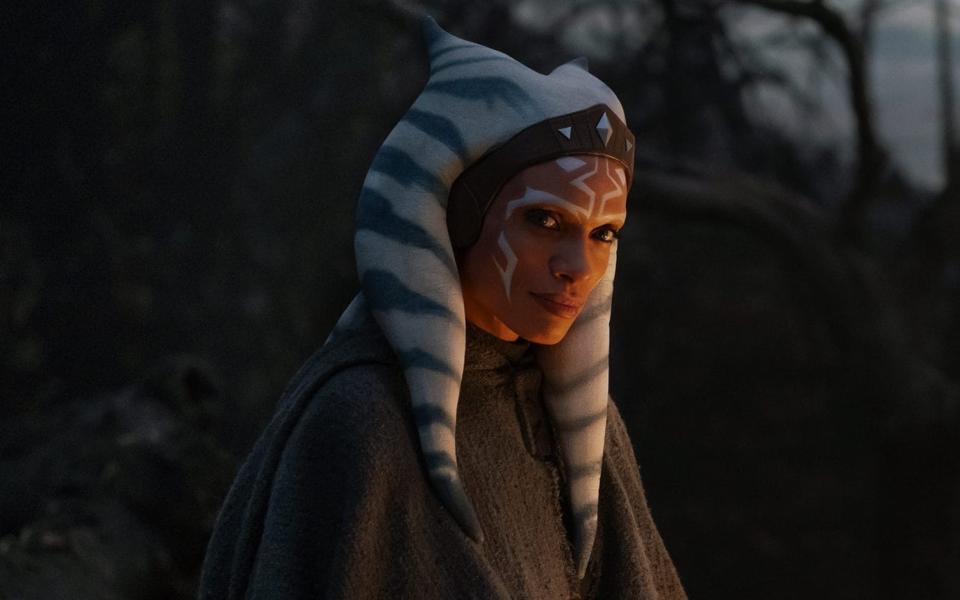What The Mandalorian gets right – and what Disney's Star Wars films got wrong

- Oops!Something went wrong.Please try again later.
The Mandalorian season two finished with a real tear-jerker of an episode but one that also contained lots of what fans love about the series: whizzing lightsabers, epic space battles and the eponymous Mando firing those tiny little missiles from out of his shirt-sleeve.
In other words it confirmed that after the disasters of the the JJ Abrams-Rian Johnson Disney trilogy Star Wars is very much back. And all thanks to the shiny-plated Mando and his side-kick Baby Yoda (Grogu as he prefers to be called).
But what is is about The Mandalorian that has restored fans’ trust in Disney’s custodianship of Star Wars? It can’t surely just be the Mandalorian himself– with his lack of facial expressions, snappy dialogue or humour. Or even Baby Yoda, who revealed a hitherto unhinted at dark side when snaffling all those Spacefrog eggs this year. So what is the true secret of Mandalorian’s appeal?
1. It celebrates diversity in the old George Lucas way
John Boyega has criticised the Abrams/Johnson trilogy for “pushing to the side” non-white characters. “You knew what to do with these other people,” he said, referring to Adam Driver and Daisy Ridley. “But not when it came to Kelly Marie Tran, when it came to John Boyega,” continued Boyega, whose ex-Stormtrooper Finn was sidelined as the series went on.
Mandalorian show-runners Jon Favreau and Dave Filoni have looked back to the example of George Lucas who cast non-white characters such as Billy Dee Williams (as Lando Calrissian) but didn’t pat himself on the back about it.
So the lead is played by Chilean-American Pedro Pascal while Rosario Dawson portrays the break-out character Ahoska Tano (who is to have her own series). The Mandalorian has elsewhere given Carl Weathers his most substantial role since Rocky IV. And it has put female characters in the foreground by casting stars such as Katee Sackhoff and Gina Carano. The difference is that unlike The Last Jedi it doesn’t “mansplain” representation to its audience. It simply walks the walk.
2. It steals from the right sources
The Abrams Disney trilogy took inspiration from just one place – the original Lucas Star Wars films. That’s why it felt so empty – it was just holding up a mirror to itself. Lucas’s Star Wars, by contrast, drew from many sources.
Lucas was inspired by, among other things, World War II dogfight movies, Westerns and by Japanese Samurai pictures – at points the 1977 Star Wars lifts scenes beat for beat from Akira Kurosawa’s The Hidden Fortress. Filoni and Favreau look to the example set by Lucas by modelling The Mandalorian on the Lone Gunslinger archetype of Sergio Leone and also on those samurai flicks Lucas so adored.
Week by week, moreover, the series have riffed on specific films. Season two’s penultimate episode, The Believer, for instance was a drew on the Dirty Dozen and on William Friedkin’s Sorcerer. The Ahsoka Tano episode, The Jedi, riffed on Kurosawa's Yojimbo, with Mando as Toshiro Mifune’s wandering ronin (Favreau actually advised Pedro Pascal watch Yojimbo as preparation).

The dynamic in the training scene between Mando and Baby Yoda in that same instalment is meanwhile said to have been inspired by the venerable manga series Lone Wolf and Cub. Kurosawa’s influence had already made itself felt in the season one episode Sanctuary, in which Cara Dune is introduced.
Here Mando and Dune join forces to defend a village from Klatoonian raiders. The story is obviously a homage to The Seven Samurai, which also inspired Hollywood’s The Magnificent Seven. And the big Boba Fett reveal at the end of season two harked back to, of all things, John Milius’s Conan the Barbarian.
Favreau and Filoni look to science fiction too. The Crait Dragon from the start of season one is a wink towards the sandworms in Frank Herbert’s Dune. By contrast, watching the Disney Trilogy the viewer might conclude that Abrams had never seen a movie outside of George Lucas’s original trilogy or read a book beyond the official novelisations.
3. It doesn't exist only to flog tat
Yes, Baby Yoda is the Star Wars Cutie to Rule Them All. And yet, Disney was apparently blind-sided by the enthusiasm with which the audience took to Grogu and didn’t have enough cash-in merch ready for Christmas 2019 (that situation has, rest assured, now been corrected).

Yet with that arguable exception, The Mandalorian has clearly been created out of a love of Star Wars rather than a love of flogging Star Wars lunch boxes and Mando soft-toys. Yes, Disney will sell you all that if you really want it. But it is a series driven by the people with a passion for this universe rather than by the Disney marketing department (which obviously had an input into, for instance, The Force Awakens’ BB-8).
4. It isn’t embarrassed about Star Wars
No sooner than JJ Abrams got his mitts on George Lucas’s universe than he started undoing all of the previous good work. The Empire had never gone away and was instead rebranded as The First Order. The Republic could be destroyed, en masse, by a single fusillade fired from a facsimile of the Death Star. The Emperor was still alive!
This wasn’t building on the source material – it was blitzing it with a flamethrower. The Mandalorian, by contrast, engages seriously with the worlds created by Lucas. Boba Fett’s back story is carefully fleshed out; we gain greater insights into the Sand People and Jawas on Tatooine. And – yes this is a spoiler alert – it brought back a de-aged CGI Luke Skywalker while resisting turning him into a crabby introvert. Here, was the Luke we remembered from Return of the Jedi.

5. It gives fans what they want
The Mandalorian is clearly made by Star Wars fans. And so it doesn’t play cute or elbow-nudge and roll its eyes in the direction of all those non-Star Wars devotees who happen to be watching (as The Last Jedi did in particular).
It just gets on with it with a minimum of fuss, whether straightforwardly introducing Ahsoka Tano exactly how Clone Wars fans always wanted - duel lightsabers emerging from the mist - or name-dropping Grand Admiral Thrawn, one of the big villains in the pre-Disney Star War “Expanded Universe”.
Even Boba Fett was brought back without any great drama. We see him spying on Mando in the desert, casually destroying a couple of Tie-Fighters with the press of a button and, a few instalments later, in swoops his super-cool ship, Slave I. This is the Star Wars we’re looking for: pacy, thrilling and full of action.

